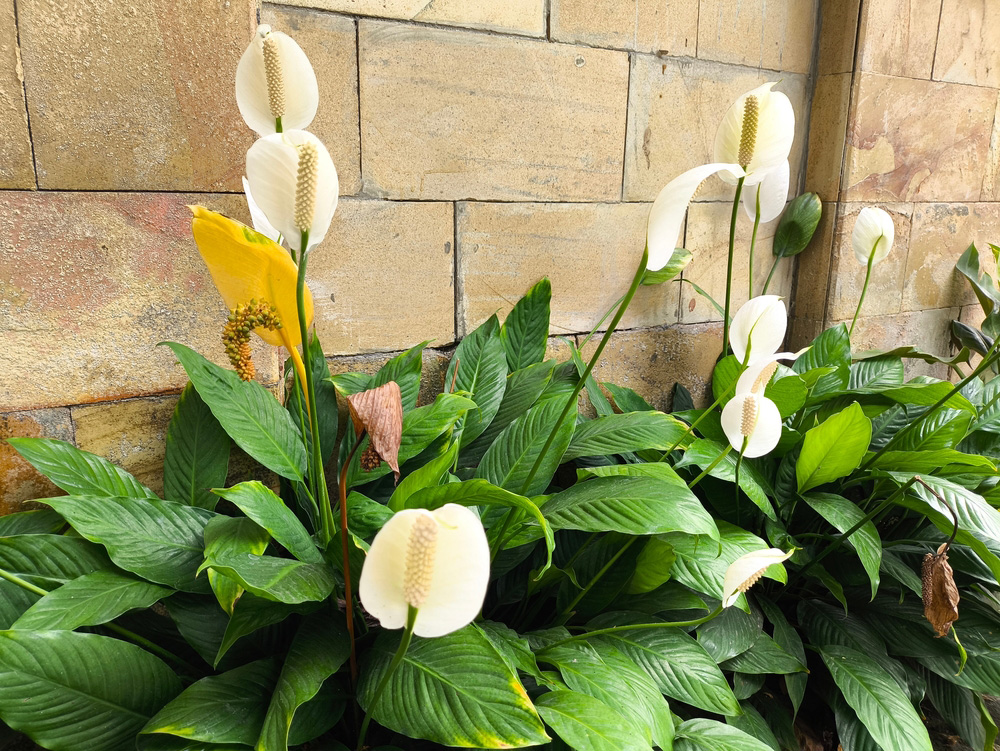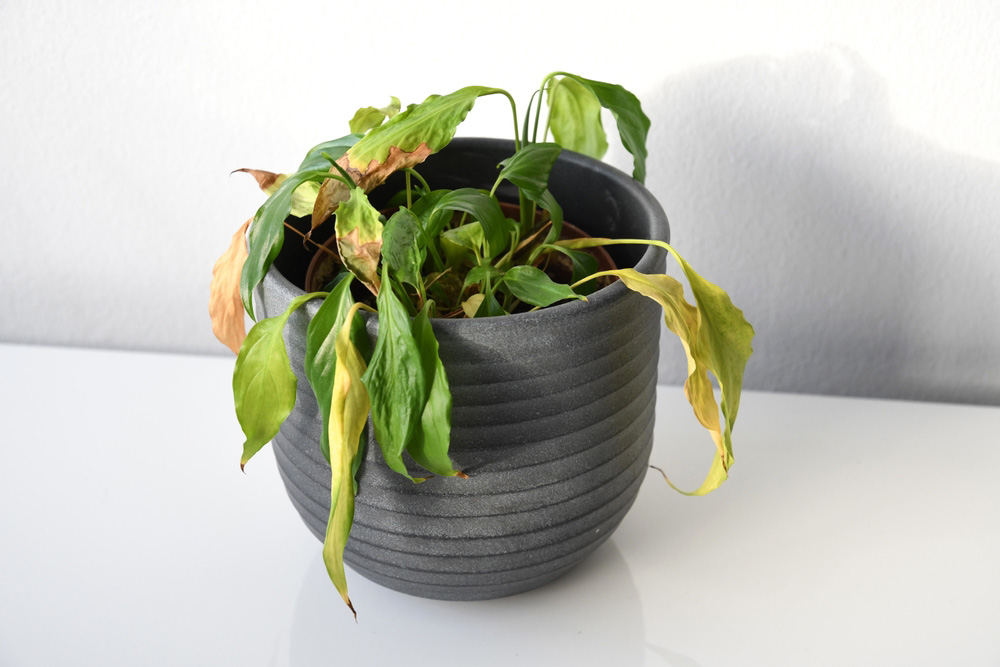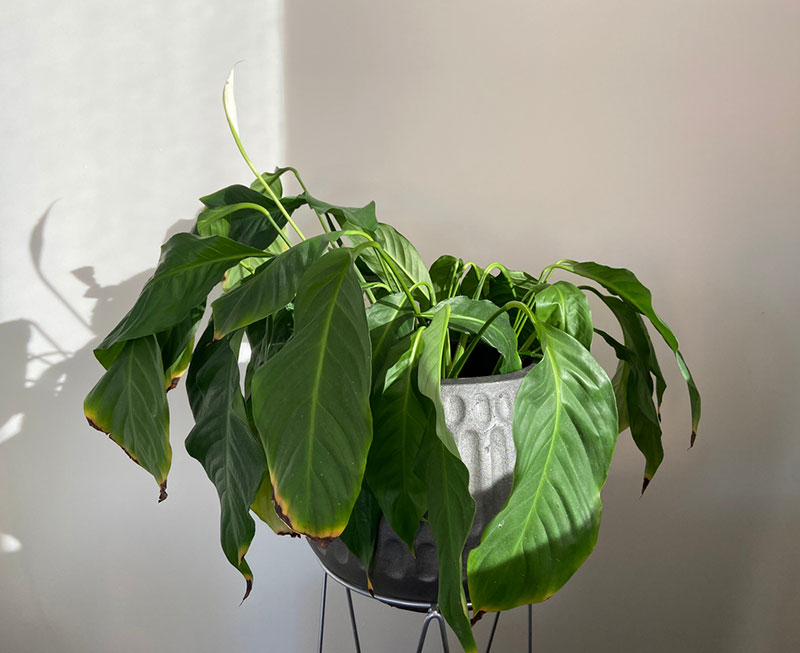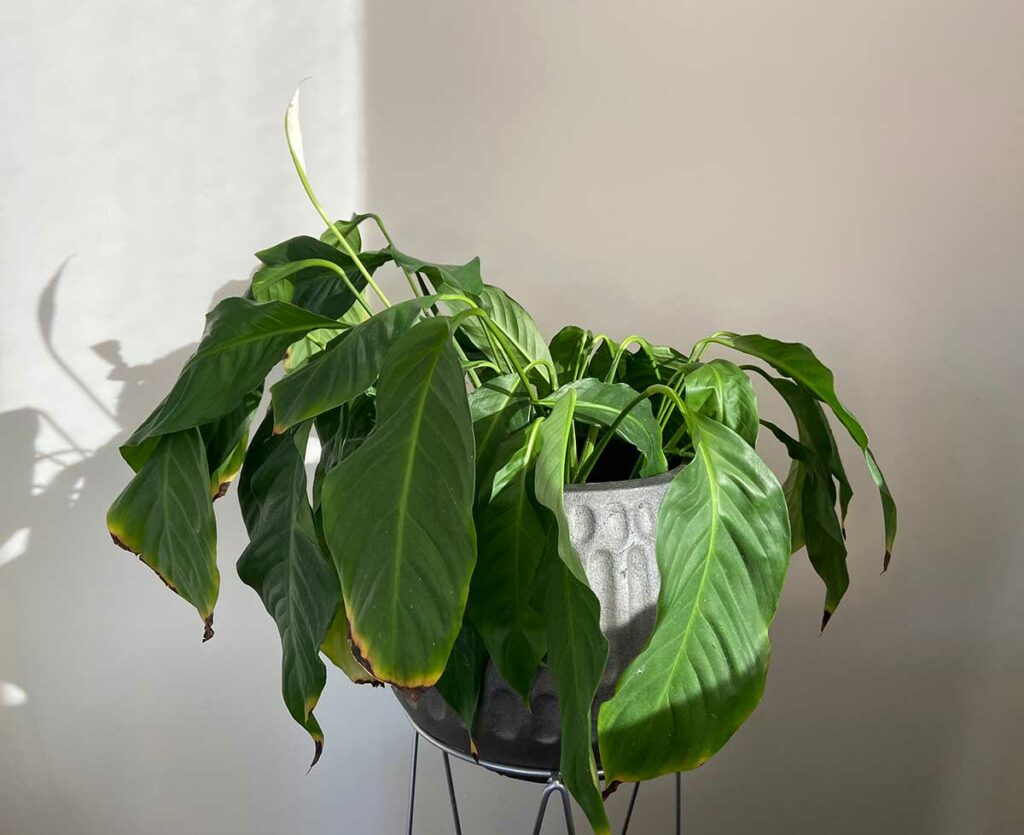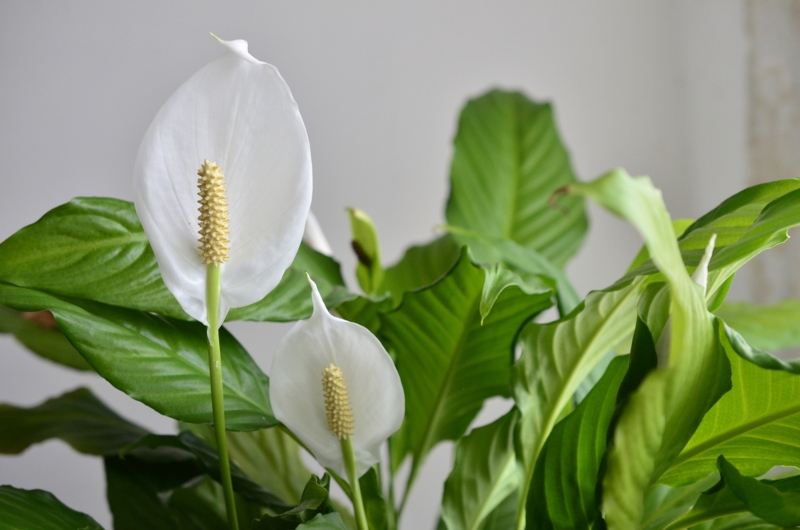
The peace lily is a plant often grown as a houseplant, as it needs warm temperatures all year long. It can bloom two times a year so that it produces flowers for several months of the year. It thrives in zones 11 and 12. The blooms are large, white flowers and the leaves are a glossy, deep green.
The peace lily is an air-filtering powerhouse, filtering out more pollutants than the average plant. They will grow as high as 3′ as a houseplant and 6′ if grown outdoors in a warm climate.
Light and Temperature Requirements
Peace lilies in nature are tropical plants that like plenty of shade, but when grown as a houseplant, they need a different arrangement. Indoors, they need filtered light rather than direct sun or shade. If the leaves turn pale and curl up, it indicates that it is getting too much sunlight. Getting a lot of direct sunlight can scorch the leaves.
The plant should be placed in a warm location away from drafts. The best temperature range for the peace lily is from 65 to 80 degrees, and it should be kept away from any temperatures of 55 and below.
Watering
Peace lilies need plenty of water, but they also need a high level of humidity. They should be watered often enough so that the soil never completely dries out. Water it less often in the winter, but don’t allow the soil to dry out. These plants also need to be misted regularly to raise the humidity level for them. Every week, mist the leaves with water that is either distilled or soft. When watering the plant, use filtered water if your water has a high level of chlorine. A water test can tell you more about your water.
Soil & Fertilizing
The soil of the peace lily should provide both good drainage and hold onto moisture. Make sure it is in a pot with excellent drainage. In potting soil, using a mix that is heavy on peat moss is best. It should also contain perlite and/or coconut fiber to further hold onto moisture. It should also have rocks, bark, or sand to allow for good drainage as well as sufficient aeration. In the summer, you can add slow-release fertilizer pellets to the soil, but don’t add any fertilizer during winter. The soil pH should stay between 5.8 and 6.5.
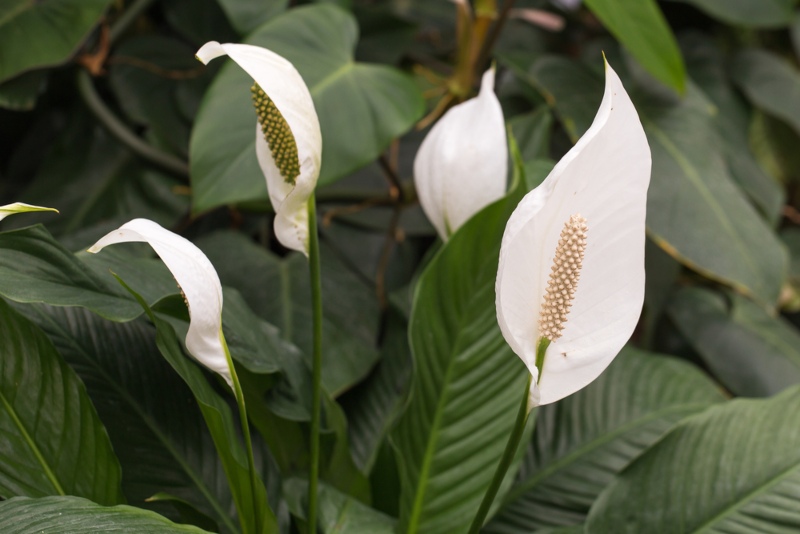
Deadheading and Pruning
After flowers have died, they can be deadheaded both for the plant’s sake and for aesthetic considerations. Removing the dead flowers will push the plant to keep flowering.
The peace lily generally needs regular pruning to get rid of dead or damaged foliage. When the flower bract dies, prune it partway down the stem to encourage the growth of more of them. When the leaves begin to fade and yellow, prune away those leaves from the base of the leaves rather than in the middle of these leaves. Use pruning shears rather than scissors, as scissors are often too dull to cut the foliage efficiently. Here are some fantastic pruning shears!
Toxicity
The peace lily is beautiful, but like many plants, it is also toxic. It can be especially hazardous for cats and dogs to eat. Once you have pruned away faded leaves and dead flowers, be sure to gather every part of the pruned material and dispose of it so that pets won’t be able to access any of the material. When you choose the best place for your peace lily, be sure to keep it in a place that will restrict access to it by pets.





